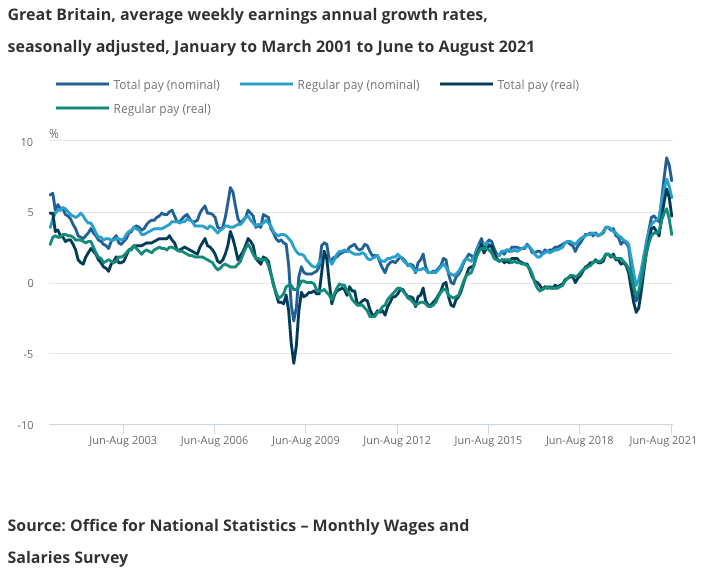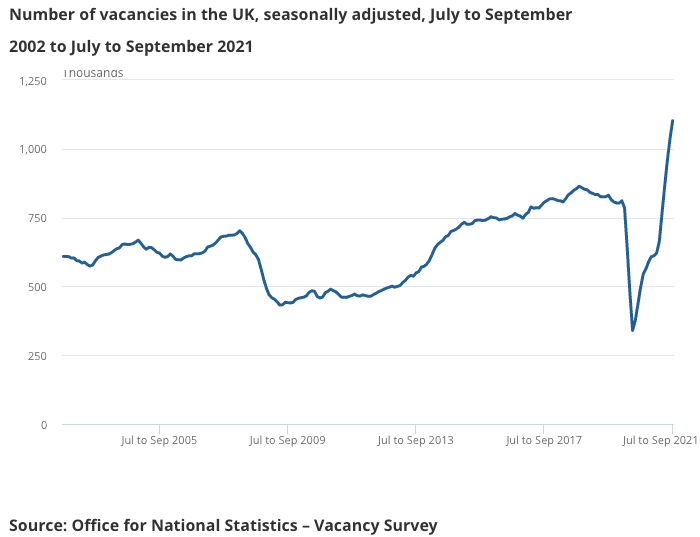NIESR says UK Wage Growth Pressures Can Accelerate Further
- Written by: Gary Howes

Image © Adobe Images
Once base effects are stripped out of the latest UK earnings data strong underlying wage growth trends can be revealed, and they will accelerate says the National Institute of Economic and Social Research (NIESR).
The findings come in the wake of the release of official earnings data from the ONS which showed the growth rate in average weekly earnings including bonuses increased 7.2% in the three months to August from the same period a year prior.
This is down from the 8.3% growth seen in the three months to July.
Excluding base effects - whereby current growth is flattered by the decline seen one year prior - the growth in average weekly earnings was at 4.2% in the three months to August, unchanged from the three months to July.
The NIESR says a record level of vacancies and rising inflation will prompt further gains in wage growth.
"The fact that the furlough scheme ended two weeks ago does not appear to have been a big labour market shock because it happened when employment was growing quickly. But a record level of vacancies suggests a future acceleration in underlying earnings growth," says Cyrille Lenoël, Principal Economist, at the NIESR.
The NIESR forecasts underlying average weekly earnings (excluding base effects) to accelerate from 4.2% in the third quarter to 4.5% in the fourth quarter.
"If that forecast proves to be correct, it will put additional pressure on the MPC to raise rates before the end of the year," says Lenoël.
Rising wages signify there is a diminishing amount of spare capacity in the economy, (spare capacity results from excess supply of labour, which in turn ensures lacklustre wage growth).
Above: Record vacancies suggest businesses are struggling to find employees, boosting employee wage bargaining power.
UK economic output fell by more than 20% in the first half of 2020 as a result of the Covid-19 pandemic and measures to contain its spread, resulting in increased unemployment and therefore raising the amount of spare capacity available.
Although activity has recovered somewhat, the Bank of England said on October 12 2020 it expects the economy’s output to remain below its potential level "for some time".
But fast forward a year and the upward pressure on wages suggests this spare capacity is now limited, therefore further economic growth could drive up wages and inflation.
It is under these circumstances that a central bank is inclined to act by raising interest rates and explains why markets now expect a 10 basis point rate rise in November and a further three in 2022.
But, Oxford Economics find that shortages of labour are exaggerated.
Their updated labour shortage index suggests that mismatches between vacancies and available workers are not a major problem across the UK economy overall.
"Only a few individual sectors, including construction, manufacturing, and agriculture, showed noteworthy shortages in August," says Andrew Goodwin, Chief UK Economist at Oxford Economics.
Inflows into paid employment in September were almost a quarter higher than the 2018-2019 average and Goodwin says this finding is hard to square with claims that in aggregate firms are struggling to find workers.
Oxford Economics' index is strongly associated with regular pay growth.
"So with a lack of economy-wide labour shortages, this means the risk of a wage-price spiral is low and we see no urgent reason for the BoE to consider raising interest rates," says Goodwin.





